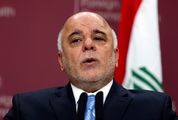LETTER FROM CHINA: Free-trade zones pave the way for China’s global integration
by Kobus van der Wath,
2013-10-15 05:51:53.0
IT’s time for the country to choose a new trial for opening … Reforms unleash huge dividends, were the words of Premier Li Keqiang two weeks after taking office in March.
True to his intentions, as of September 29, China officially opened up what the government calls its first free-trade zone (FTZ) as opposed to a special economic zone (SEZ). The area covers 29km² of land in the country’s largest financial centre, Shanghai.
The exact scope of the FTZ has been a hot topic in all spheres of the business world since July, when it was approved by a committee led by Mr Li.
While the global business community is perusing the finer details of the FTZ, here are a few headline-grabbing changes: the liberalisation of 19 industries (all heavily service-orientated) to varying degrees; the liberalisation of interest rates; the relaxation of foreign investment criteria and structures, the freer convertibility of the renminbi; the allowance of financial institutions within the area being able to invest in Shanghai’s securities and futures markets as well as qualified overseas individuals being able to open accounts and trade local securities.
The establishment of the FTZ continues a largely successful trend that China has been following since the late 1970s, when Deng Xiaoping started experimenting with SEZs in Shenzhen. With the help of these types of zones, China has been carefully opening up and integrating itself with the rest of the world.
These zones allow the government to familiarise themselves with the economic, legal and social requirements of their respective frameworks before applying them to the rest of the country. Furthermore, not only does the national government learn from the developments within these special zones but so will local governments of cities that will have to govern these zones when they expand to their region.
The Shanghai FTZ is especially symbolic as it reflects the new vision of China’s leadership and that they are not solely depending on their present growth model. There are many examples of countries that were complacent and persistently used a growth model that was no longer suited to achieving a high-income country status. These countries found themselves stuck in the dreaded middle-income trap.
Beijing seems to understand that in order to transform its unsustainable export-led growth model into a sustainable consumer-led one and fully integrate China in the world economy, certain industries need to be released from their shackles. The services sector, with the financial industry in particular, is poised to play a crucial role in those goals.
While the ’70s and ’80s were marked for liberalising trade in China, this zone is perhaps the biggest step so far in the liberalisation of the financial services sector and financial market integration with the global market.
Analysts are undecided as to the short-term effect of the FTZ. They estimate that the FTZ will contribute from 0.1% to 0.75% per annum to China’s gross domestic product growth over the next five years. However, most agree that the long-term effect for the country is expected to be immeasurably positive once China’s leadership is comfortable enough to apply the reforms to other cities, or on a national scale.
In fact, there is a story of a small southern city called Qianhai that has passed below the radar. In line with a blueprint announced by China’s State Council, it has recently established a SEZ that is dedicated to providing global communications support to firms within the zone.
It has already attracted over 1,700 companies with a total registered capital of $23bn as of the middle of last month, 70% of which are related to financial services, including more than 20 Fortune 500 companies such as HSBC, Standard Chartered and Hang Seng Bank.
These zones, successfully pioneered by Xiaoping, are proven reform strategies if correctly implemented. Shanghai in particular is a significant milestone in China’s attempt to create a world financial centre that can match, if not beat, Hong Kong’s standing in the world.
There is still a long road ahead to full liberalisation, but China will not rush to reach that status. Numerous facets including world market forces and its citizens’ economic wellbeing will be considered by China’s leadership before making changes.
The mantra of "crossing the river by feeling the stones" is particularly apt for describing China’s successful approach to integrating itself with the rest of the world. One thing is for sure, this marks another progressive step forward for the country.
• Van der Wath is group MD of The Beijing Axis. He can be reached at [email protected]
IT’s time for the country to choose a new trial for opening … Reforms unleash huge dividends, were the words of Premier Li Keqiang two weeks after taking office in March.
True to his intentions, as of September 29, China officially opened up what the government calls its first free-trade zone (FTZ) as opposed to a special economic zone (SEZ). The area covers 29km² of land in the country’s largest financial centre, Shanghai.
The exact scope of the FTZ has been a hot topic in all spheres of the business world since July, when it was approved by a committee led by Mr Li.
While the global business community is perusing the finer details of the FTZ, here are a few headline-grabbing changes: the liberalisation of 19 industries (all heavily service-orientated) to varying degrees; the liberalisation of interest rates; the relaxation of foreign investment criteria and structures, the freer convertibility of the renminbi; the allowance of financial institutions within the area being able to invest in Shanghai’s securities and futures markets as well as qualified overseas individuals being able to open accounts and trade local securities.
The establishment of the FTZ continues a largely successful trend that China has been following since the late 1970s, when Deng Xiaoping started experimenting with SEZs in Shenzhen. With the help of these types of zones, China has been carefully opening up and integrating itself with the rest of the world.
These zones allow the government to familiarise themselves with the economic, legal and social requirements of their respective frameworks before applying them to the rest of the country. Furthermore, not only does the national government learn from the developments within these special zones but so will local governments of cities that will have to govern these zones when they expand to their region.
The Shanghai FTZ is especially symbolic as it reflects the new vision of China’s leadership and that they are not solely depending on their present growth model. There are many examples of countries that were complacent and persistently used a growth model that was no longer suited to achieving a high-income country status. These countries found themselves stuck in the dreaded middle-income trap.
Beijing seems to understand that in order to transform its unsustainable export-led growth model into a sustainable consumer-led one and fully integrate China in the world economy, certain industries need to be released from their shackles. The services sector, with the financial industry in particular, is poised to play a crucial role in those goals.
While the ’70s and ’80s were marked for liberalising trade in China, this zone is perhaps the biggest step so far in the liberalisation of the financial services sector and financial market integration with the global market.
Analysts are undecided as to the short-term effect of the FTZ. They estimate that the FTZ will contribute from 0.1% to 0.75% per annum to China’s gross domestic product growth over the next five years. However, most agree that the long-term effect for the country is expected to be immeasurably positive once China’s leadership is comfortable enough to apply the reforms to other cities, or on a national scale.
In fact, there is a story of a small southern city called Qianhai that has passed below the radar. In line with a blueprint announced by China’s State Council, it has recently established a SEZ that is dedicated to providing global communications support to firms within the zone.
It has already attracted over 1,700 companies with a total registered capital of $23bn as of the middle of last month, 70% of which are related to financial services, including more than 20 Fortune 500 companies such as HSBC, Standard Chartered and Hang Seng Bank.
These zones, successfully pioneered by Xiaoping, are proven reform strategies if correctly implemented. Shanghai in particular is a significant milestone in China’s attempt to create a world financial centre that can match, if not beat, Hong Kong’s standing in the world.
There is still a long road ahead to full liberalisation, but China will not rush to reach that status. Numerous facets including world market forces and its citizens’ economic wellbeing will be considered by China’s leadership before making changes.
The mantra of "crossing the river by feeling the stones" is particularly apt for describing China’s successful approach to integrating itself with the rest of the world. One thing is for sure, this marks another progressive step forward for the country.
• Van der Wath is group MD of The Beijing Axis. He can be reached at [email protected]




















Change: -0.47%
Change: -0.57%
Change: -1.76%
Change: -0.34%
Change: 0.02%
Data supplied by Profile Data
Change: -1.49%
Change: 0.07%
Change: -0.47%
Change: 0.00%
Change: 0.04%
Data supplied by Profile Data
Change: 0.47%
Change: 1.16%
Change: 0.65%
Change: 0.15%
Change: 1.17%
Data supplied by Profile Data
Change: 0.11%
Change: -0.42%
Change: 0.13%
Change: -1.22%
Change: -0.87%
Data supplied by Profile Data